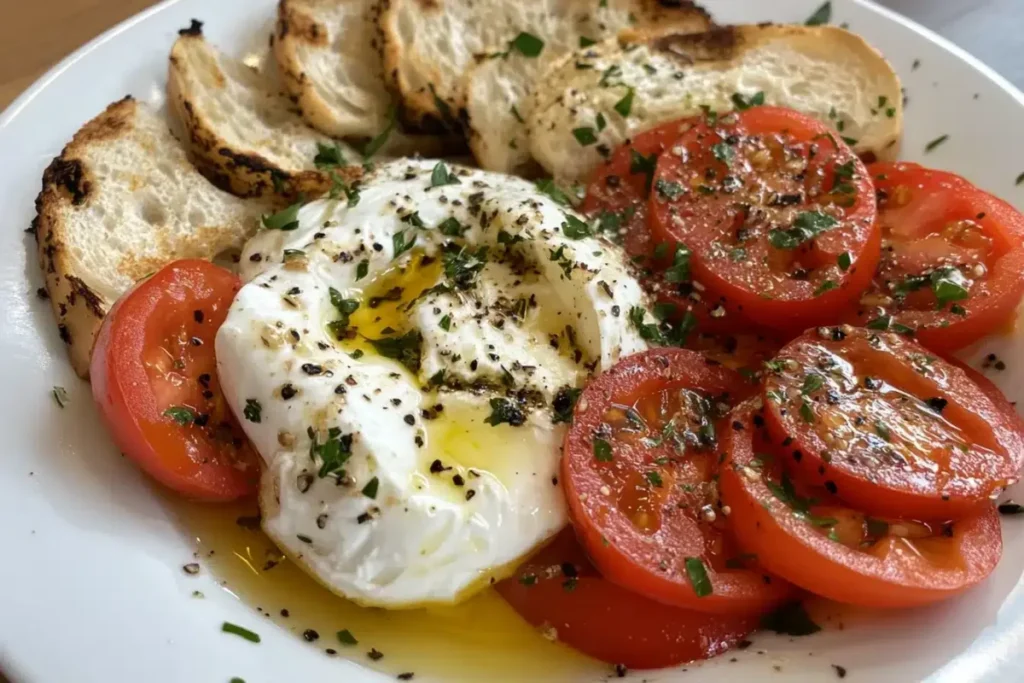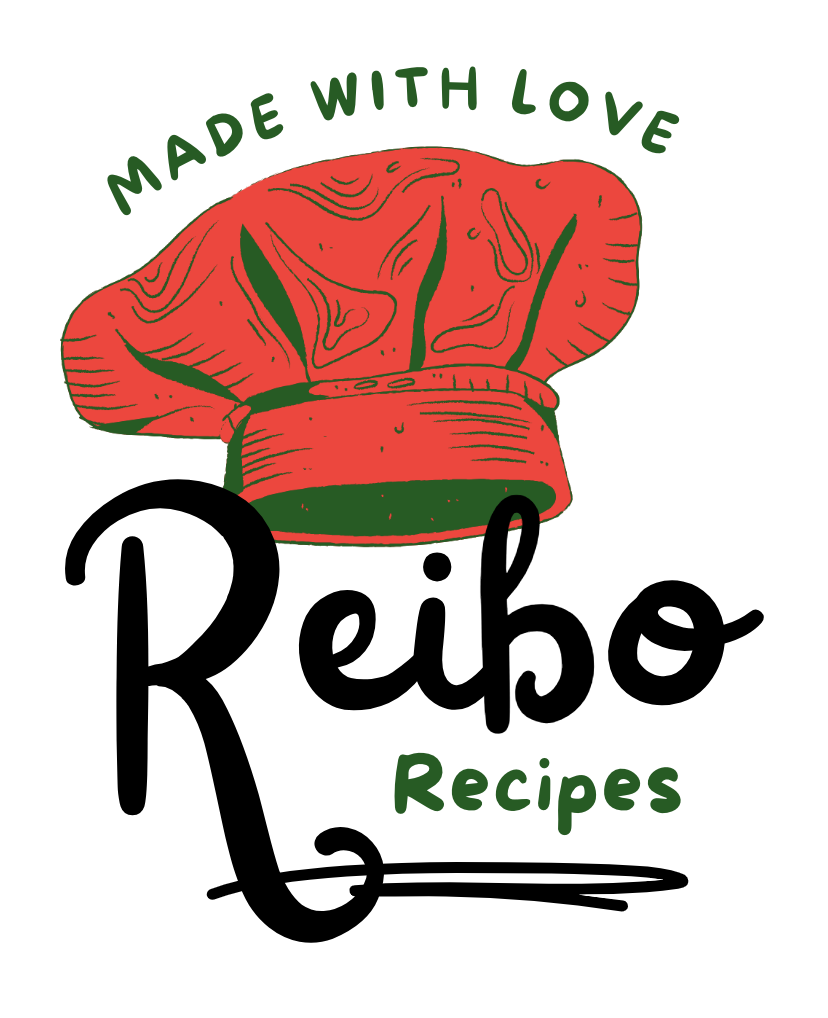
Introduction to Burrata Cheese
What is Burrata Cheese?
Burrata cheese, a fresh Italian cheese, not only delights with its creamy, rich texture but also with its mild flavor. Originating from Southern Italy, this cheese has gradually gained worldwide popularity as a beloved delicacy. While often compared to mozzarella, Burrata, however, offers a unique experience with its soft outer shell of mozzarella and an inner filling of stracciatella and cream, thereby creating an incredibly rich and decadent treat.
History
The history of Burrata cheese dates back to the early 20th century in the Puglia region of Italy. Traditionally, it was made by hand, and this cheese was initially created as a way to utilize leftover mozzarella curds and cream. Over time, however, Burrata gained widespread popularity for its luxurious texture and flavor, eventually becoming a staple in Italian cuisine. Moreover, it evolved into a sought after delicacy in gourmet kitchens around the world.
The Unique Taste Profile of Burrata Cheese
Tasting Notes of Burrata
Burrata’s flavor profile is distinct and memorable, characterized by a mild, buttery taste with a subtle hint of sweetness. The soft outer shell offers a gentle chew, while the creamy interior provides a smooth, almost decadent experience. Its rich, fresh milk flavor makes it an ideal pairing with ingredients that allow its delicate taste to shine, such as ripe tomatoes, olive oil, or fresh herbs.
How Burrata Differs in Flavor from Other Cheeses
Compared to other Italian cheeses, Burrata is exceptionally mild, with a richer and creamier texture than mozzarella and less tanginess than cheeses like ricotta. Burrata’s unique taste comes from its cream filling, which not only enhances its mouthfeel but also gives it a luxurious quality that elevates any dish it’s added to.
How is Burrata Made?
Ingredients Used
To create authentic Burrata cheese, you need only a few simple ingredients: fresh cow’s or buffalo’s milk, cream, rennet, and salt. The milk forms the base, while the cream adds richness, making Burrata a truly indulgent treat.
The Production Process
The production process of Burrata starts with curdling the milk using rennet. Once the curds form, artisans carefully heat and stretch them into a soft, pliable dough. They then shape this mozzarella dough into a pouch, fill it with a rich mixture of stracciatella (shredded cheese curds) and cream, and seal it. Consequently, this method results in a delicate cheese with a soft outer shell and a creamy, luscious center.
For those interested in a deeper dive into Italian cheeses, the History of Italian Cheeses provides an excellent overview of how cheeses like Burrata have evolved over time.
Artisanal vs. Commercial Production
Artisans craft Burrata by hand, while commercial production often uses mechanized processes to meet higher demand. However, artisanal Burrata stands out for its unmatched quality and flavor, as the hand-crafted method ensures a delicate texture and rich taste.
Culinary Uses of Burrata Cheese
Burrata Cheese in Seasonal Dishes
Spring and Summer Recipes Featuring Burrata
During spring and summer, when fresh produce is abundant, Burrata can be the star ingredient in light, refreshing dishes. Pair it with heirloom tomatoes, fresh basil, and a drizzle of balsamic glaze for a classic Italian appetizer. Alternatively, combine it with fresh strawberries, arugula, and a splash of olive oil for a seasonal salad that highlights the cheese’s creamy texture.
Autumn and Winter Recipes with Burrata
In cooler months, Burrata pairs well with heartier, warm dishes. Try placing Burrata over roasted butternut squash, caramelized onions, or a warm beet salad for a comforting side. It also enhances pasta dishes, adding richness to pumpkin ravioli or creamy risotto. Burrata’s versatility across seasons allows it to add richness and depth to dishes year-round.
Burrata in Italian Cuisine
In Italian cuisine, chefs celebrate Burrata cheese for its versatility. They often serve it with fresh tomatoes, basil, and a drizzle of olive oil, crafting a simple yet flavorful dish that beautifully highlights the cheese’s creamy texture.
Modern and Creative Uses
Beyond traditional dishes, Burrata has found its place in modern recipes. Here are a few creative ways to enjoy this luxurious cheese:
- Burrata in Salads: Add it to salads for a rich, creamy element.
- Burrata on Pizza: Place it on freshly baked pizza for an indulgent twist.
- Pairing Burrata with Fruits and Nuts: Combine with fruits like figs or peaches and nuts like almonds for a sweet-savory treat.
- Burrata as a Dessert Ingredient: Pair with honey and berries for a sophisticated dessert.
To further understand the health benefits of incorporating cheeses like Burrata into your diet, visit this comprehensive article on the nutritional benefits of cheese.
Nutritional Information and Health Benefits
Nutritional Profile of Burrata Cheese
Burrata is rich in protein, calcium, and essential vitamins like B12. However, due to its cream content, it’s also higher in calories and fat compared to other cheeses. Moderation is key when enjoying this indulgent cheese.
Health Benefits
Despite its richness, Burrata cheese offers several health benefits:
- High in Calcium and Protein: Supports bone health and muscle repair.
- Low Carbohydrate Content: Suitable for low-carb diets.
- Rich in Vitamins: Provides essential nutrients like vitamin A and B12.
For a broader perspective on the nutritional benefits of cheese, visit Nutritional Benefits of Cheese.
Comparing Burrata to Other Cheeses
When compared to mozzarella, ricotta, and other soft cheeses, Burrata truly stands out for its exceptionally creamy texture and rich flavor. Although it may not be as versatile as mozzarella in some dishes, its unique qualities undeniably make it a favorite in gourmet cooking. Furthermore, the luxurious experience it offers sets it apart, making it a cherished ingredient among chefs and food enthusiasts alike.
Burrata vs. Mozzarella: A Comparative Guide
Burrata for Gourmet Occasions
is ideal for special occasions or gourmet dining experiences, as its rich texture and creamy filling provide a unique element to sophisticated dishes. It pairs well with wine and other high-quality ingredients, making it a favorite for gourmet salads, appetizers, and charcuterie boards.
Mozzarella for Everyday Meals
Mozzarella, on the other hand, is a go-to cheese for daily meals, especially for dishes requiring a great melt. It’s more economical and versatile for cooking and holds up well when melted in casseroles, pizza, and pasta. The firm texture and mild flavor of mozzarella make it a staple cheese in everyday kitchens, while Burrata is reserved for more refined dishes.
Burrata’s Rising Popularity in Plant-Based and Vegan Alternatives
Vegan Burrata Alternatives
With the rise of plant-based diets, vegan Burrata alternatives have emerged in the market, crafted from cashew cream, coconut milk, or almond milk to replicate Burrata’s creamy texture. These alternatives allow those following dairy-free or vegan lifestyles to enjoy a similar luxurious experience in recipes that call for Burrata.
How Vegan Burrata Compares to Traditional Burrata
While vegan Burrata mimics the texture of traditional Burrata, it offers a slightly different flavor profile due to its nut based ingredients. However, it serves as an excellent option for those with dietary restrictions, allowing them to participate in gourmet recipes that were once exclusive to dairy based stuff.
How to Buy and Store
Where to Buy Burrata Cheese
You can easily find Burrata cheese in most well stocked grocery stores, specialty cheese shops, or online retailers. Additionally, when buying Burrata, you should look for fresh, firm cheese that feels heavy for its size, as this typically indicates a generous amount of cream inside.
Choosing the Best Burrata
When selecting Burrata, freshness is key. Opt for cheese with a short shelf life, as this indicates it was made recently. The packaging should be intact, with no signs of leakage.
Proper Storage Techniques
To store Burrata, keep it in its original packaging and place it in the coldest part of your refrigerator. It ought to be expended inside a few days of buy for the best flavor and texture. For those who want to explore more about Italian cheeses, check out our detailed guide on Crab Brulee Recipe.
Popular Burrata Cheese Recipes
Classic Burrata Caprese
A Burrata Caprese is a fresh take on the classic Caprese salad. Replace mozzarella with Burrata for an additional rich and sumptuous dish. Pair with ripe tomato, fresh basil, and a drizzle of olive oil for a simple yet elegant meal. If you’re interested in discovering other gourmet stuff like Burrata, our article on Garlic Dip provides excellent insights into elevating your culinary creations.
Burrata Pizza
Transform your pizza by adding Burrata after it’s baked. The left over warm from the pizza will delicately liquefy the Burrata, making a rich topping that sets impeccably with tomato sauce and new basil.
Burrata and Roasted Vegetables
Roasted vegetables, such as asparagus or cherry tomato, pair wonderfully with Burrata. The creaminess of the cheese complements the natural sweetness of the vegetables, making for a balanced and delicious dish.
FAQs About Burrata Cheese
What is the shelf life of Burrata Cheese?
To enjoy the best flavor, consume Burrata within 2-3 days of wait. Additionally, store it in the refrigerator, but avoid freezing it, as freezing can significantly alter its texture.
Can Burrata be frozen?
It’s generally best to avoid freezing Burrata because, in most cases, it negatively impacts the texture, making it not only less creamy but also more grainy once thawed. Furthermore, freezing can alter the delicate balance of flavors that Burrata is known for, so it’s much better to enjoy it fresh for the best culinary experience. Additionally, keeping Burrata in the refrigerator instead of the freezer helps maintain its luxurious creaminess and rich taste, which are the qualities that make this cheese so special.
How do you eat Burrata Cheese?
You should enjoy Burrata fresh and at room temperature. It pairs wonderfully with crusty bread, fresh fruits, and a drizzle of olive oil or balsamic vinegar.
Is Burrata Cheese gluten free?
Yes, Burrata is naturally gluten free, which makes it an excellent option for those with gluten sensitivities or celiac disease.
This version adds transition words to enhance the flow of the content.
Conclusion
Final Thoughts on Burrata Cheese
Burrata cheese not only adds versatility and luxury to a wide range of dishes, but it also significantly enhances every meal with its creamy, rich texture. Whether you enjoy it in a classic Italian dish or decide to experiment with modern recipes, Burrata undoubtedly provides an indulgent experience that’s truly hard to beat.
Encouragement to Experiment with Burrata
Therefore, don’t hesitate to get creative with Burrata. Furthermore, its unique texture and flavor beautifully complement both savory and sweet dishes, ultimately making it an invaluable addition to your culinary repertoire.
This revision includes additional transition words to further improve the flow and coherence of the content. For more information on the rich history and cultural significance of Italian cheeses, take a look at this resource on the evolution of Italian dairy products.
